
Our Blog
Use our blog as a resource of information pertaining to lawn and landscape maintenance information and services for your properties.

Use our blog as a resource of information pertaining to lawn and landscape maintenance information and services for your properties.
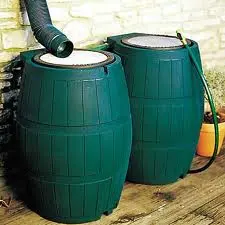 This past Saturday, (Oct. 12th), I listened to what was probably the last thunderstorm of the season. Along with some pretty gusty winds was a very heavy rainfall, which I watched roll down the streets towards drains that were already covered with leaf debris. All that water running into our sewers and eventually out to Lake Michigan, not just waste water but wasted water. How many times a year do we hear about MMSD (Milwaukee Metropolitan Sewage District) having to dump the contents of the storm sewers into lake Michigan UNPROCESSED because of a heavy downpour that the sewer system couldn’t handle? There is a solution, and an easy one. Install a rain barrel in our yard capturing the roof fun off from your house and/or garage. This will not only help preserve Lake Michigan, but reduce water pollution (oil, grease, fertilizers) and can also lower your water costs.
This past Saturday, (Oct. 12th), I listened to what was probably the last thunderstorm of the season. Along with some pretty gusty winds was a very heavy rainfall, which I watched roll down the streets towards drains that were already covered with leaf debris. All that water running into our sewers and eventually out to Lake Michigan, not just waste water but wasted water. How many times a year do we hear about MMSD (Milwaukee Metropolitan Sewage District) having to dump the contents of the storm sewers into lake Michigan UNPROCESSED because of a heavy downpour that the sewer system couldn’t handle? There is a solution, and an easy one. Install a rain barrel in our yard capturing the roof fun off from your house and/or garage. This will not only help preserve Lake Michigan, but reduce water pollution (oil, grease, fertilizers) and can also lower your water costs.
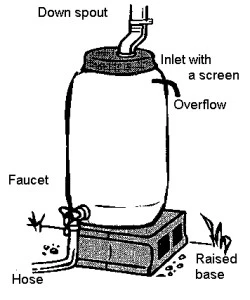 According to the Environmental Protection Agency, outdoor irrigation can count for up to 40% of water use by households during the summer when rain becomes scarce. Municipalities often institute mandatory water restrictions, leaving your yard and plants brown and crispy, sometimes with the negative effects lasting into the next summer. Just one rain barrel can save the average home owner up to 1300 gallons of water during the summer. With the usual rain barrel being a 55 gallon drum, just ¼ inch of rain can fill it to the top and can be used...
According to the Environmental Protection Agency, outdoor irrigation can count for up to 40% of water use by households during the summer when rain becomes scarce. Municipalities often institute mandatory water restrictions, leaving your yard and plants brown and crispy, sometimes with the negative effects lasting into the next summer. Just one rain barrel can save the average home owner up to 1300 gallons of water during the summer. With the usual rain barrel being a 55 gallon drum, just ¼ inch of rain can fill it to the top and can be used...
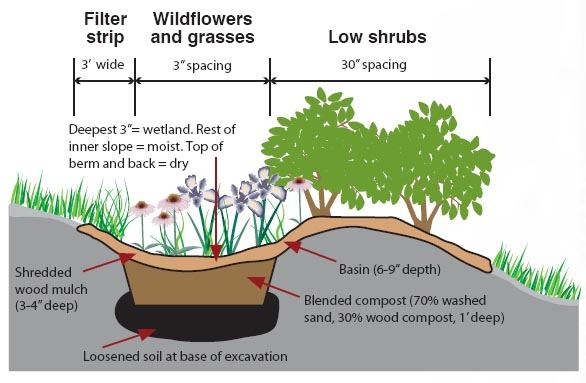 In a previous blog article, I wrote about using a rain barrel in your yard to save money for the homeowner and to help save local lakes and streams from storm run-off. As a new homeowner, one of my first purchases next spring will be a rain barrel. But there is another way to capture that storm run-off and beautify your yard at the same time- A rain garden. Like rain barrels, rain gardens have gotten a lot of press recently, but many homeowners still seem confused or reluctant to install one. What exactly is a rain garden? How does it work? What kind of plants do I install? Hopefully, this blog can answer questions and clear up some of the confusion.
In a previous blog article, I wrote about using a rain barrel in your yard to save money for the homeowner and to help save local lakes and streams from storm run-off. As a new homeowner, one of my first purchases next spring will be a rain barrel. But there is another way to capture that storm run-off and beautify your yard at the same time- A rain garden. Like rain barrels, rain gardens have gotten a lot of press recently, but many homeowners still seem confused or reluctant to install one. What exactly is a rain garden? How does it work? What kind of plants do I install? Hopefully, this blog can answer questions and clear up some of the confusion.
First, what exactly is a rain garden? In the simplest terms, a rain garden is a shallow depression in your yard, planted with native plants. These depressions are often, through not always mulched. The plants are planted in soil that has been amended to increase its filtration rate. A fancy way of saying, how fast the water absorbs into the ground. When choosing a site for you rain garden, consider an area in which storm water run-off is most prevalent in your property. Remember that downspouts can be directed into rain gardens to absorb run-off from buildings. Avoid placing rain gardens on a slope (it may actually encourage erosion), directly above septic systems, and remember to keep your rain garden a minimum of 10 feet away from the...
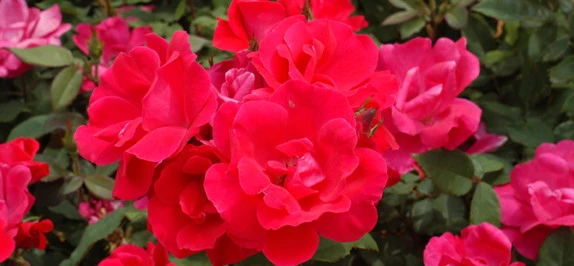 The knockout rose is a popular plant in many people’s landscapes and with good reason. Introduced in the year 2000 and winner of numerous awards, including rose of the year from the American Rose Society, it is the most widely sold rose in North America. Over the past couple of landscape seasons, our customers have had questions about, or simply did not understand all the benefits of these great roses. Here is a little “rose primer”, if you will, about the knockout rose.
The knockout rose is a popular plant in many people’s landscapes and with good reason. Introduced in the year 2000 and winner of numerous awards, including rose of the year from the American Rose Society, it is the most widely sold rose in North America. Over the past couple of landscape seasons, our customers have had questions about, or simply did not understand all the benefits of these great roses. Here is a little “rose primer”, if you will, about the knockout rose.
The rose was created by Wisconsin rose breeder, William Radler, who was looking to reduce the “to do list” in rose gardens. It is a cold hardy, disease resistant, and self cleaning; meaning, there is no need to deadhead.
That’s right, I said, NO NEED TO DEADHEAD! True pruning (trimming or cutting off parts of the plant that are superfluous, or to improve the shape or growth), should really only be done about once a year. The knockout website as well as other experts agree, the time to prune is late winter to early spring (after the last hard frost, but before new growth appears). Do not prune in the fall. When pruning, remove and dead or damaged wood, and do little shaping if necessary. Knockouts are designed to grow vigorously, so prune them down to about 2-2 ½’ below the height you would like them to be. According to the knockout website, these roses are...
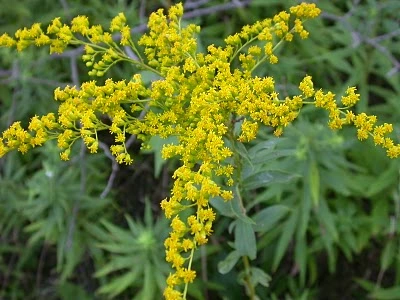 It is mid-September. Are your eyes itchy? Is your nose runny? Do you sneeze worse when you step outside? Chances are, you are suffering from hay fever and the culprit is ragweed- NOT Goldenrod. Goldenrod – that tall late summer/early fall blooming perennial with yellow flowers- often is unfairly blamed for causing hay fever. That’s too bad, because goldenrod is a wonderful addition to the back of any perennial border. So, why does goldenrod get such a bad rep? Well, both ragweed and goldenrod bloom at the same time, and when people see the masses of bright golden flowers, they automatically assume that its pollen is the source of their irritations. Actually, goldenrod pollen is too heavy and sticky to be blown far from the flowers, which is why it is so brightly colored. Goldenrod must need a way to attract insects who are its main pollinators.
It is mid-September. Are your eyes itchy? Is your nose runny? Do you sneeze worse when you step outside? Chances are, you are suffering from hay fever and the culprit is ragweed- NOT Goldenrod. Goldenrod – that tall late summer/early fall blooming perennial with yellow flowers- often is unfairly blamed for causing hay fever. That’s too bad, because goldenrod is a wonderful addition to the back of any perennial border. So, why does goldenrod get such a bad rep? Well, both ragweed and goldenrod bloom at the same time, and when people see the masses of bright golden flowers, they automatically assume that its pollen is the source of their irritations. Actually, goldenrod pollen is too heavy and sticky to be blown far from the flowers, which is why it is so brightly colored. Goldenrod must need a way to attract insects who are its main pollinators.
Ragweed has small, fairly unremarkable flowers that unleash abundant amounts of pollen freely into the wind. The only way you and I know that ragweed is blooming at all is through our allergic reactions to the pollen. Thousands of tiny flowers on each plant result in the release of approximately one billion grains of pollen. This happens usually during the mid-morning hours as dew dries and humidity decrease. It is estimated that up to 1 million tons of ragweed pollen is produced each year in North America...
Just complete the form below to get a pricing quote.
